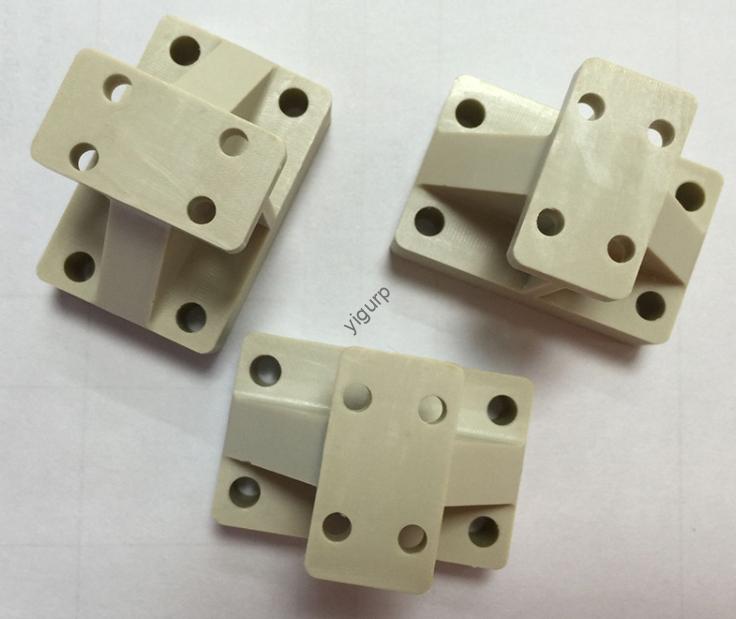Si vous travaillez sur du prototypage pour des secteurs comme l'aérospatiale, dispositifs médicaux, ou fabrication à haute température, tu t'es peut-être demandé: "Les prototypes d'impression 3D peuvent-ils utiliser du matériau PEEK?” Let me give you a straightforward answer first—Oui, absolument! COUP D'OEIL (Polyéther Éther Cétone) est un matériau haute performance qui change la donne pour les prototypes devant résister à des conditions difficiles. Let’s walk through everything you need to know to decide if it’s the right fit for your project.
Is PEEK Material Suitable for 3D Printing Prototypes?
First off, let’s clear up any doubts: PEEK isn’t just “suitable” for 3D printing prototypes—it’s a top-tier choice for projects that demand extreme performance. Unlike common materials like PLA or ABS, PEEK is a high-performance thermoplastic polymer with unbeatable properties that mimic the needs of final products in harsh environments.
Think about it: if your prototype needs to handle high heat (like parts near engines), resist chemicals (such as in lab equipment), or be used in medical settings (touching human tissue), PEEK checks all those boxes. En fait, un 2024 industry report found that 68% of engineers working on high-performance prototypes choose PEEK over other materials—it’s that reliable when tough conditions are involved.
Key Advantages of Using PEEK for 3D Printing Prototypes
PEEK’s strengths go way beyond basic functionality—they solve real pain points in prototyping. Let’s break down its biggest advantages with simple data to show why they matter:
- Exceptional High-Temperature Resistance
PEEK can handle temperatures up to 260°C (that’s hotter than boiling water!) and even stay stable for short periods at 300°C. Par exemple, a PEEK prototype of an engine component can be tested in simulated high-heat environments without warping or melting—something ABS (which maxes out at 100°C) could never do. This is a lifesaver for aerospace, automobile, or industrial prototyping.
- Strong Chemical Resistance
It stands up to most corrosive fluids and gases—think acids, huiles, and industrial cleaners. Lab tests show PEEK prototypes can be exposed to common chemicals (like sulfuric acid or motor oil) pour 1,000+ hours without degradation. If your prototype will be used in labs, factories, or outdoor harsh conditions, this resistance means you won’t have to redo tests due to material damage.
- Lightweight Yet Durable
PEEK’s density is only about 1.3 g/cm³—less than half the density of aluminum (2.7 g/cm³) et one-sixth that of steel (7.8 g/cm³). But don’t let its light weight fool you—it has a tensile strength of 90 MPa, which is close to some metals. A PEEK prototype of a drone part, par exemple, est 40% lighter than an aluminum prototype but just as strong—perfect for weight-sensitive projects.
- Excellent Biocompatibility for Medical Use
Dans le domaine médical, PEEK is a star. It’s approved by regulatory bodies like the FDA for use in contact with human tissue (think surgical tool parts or implant prototypes). Unlike some materials that cause irritation, PEEK has a 99% biocompatibility rate for short-term use, making it ideal for medical device prototyping.
Critical Considerations for 3D Printing Prototypes with PEEK
While PEEK is amazing, it’s not a one-size-fits-all. Here’s a table to help you weigh the key factors against your project needs:
| Facteur | Ce que vous devez savoir | Data/Examples to Guide You |
| 3D Printing Equipment Requirements | PEEK needs specialized printers—standard FDM or SLA printers won’t cut it. | PEEK requires high-temperature 3D printers (température de la buse: 370–420°C, lit chauffant: 120–160°C) and an enclosed chamber. These printers cost \(10,000–)50,000, par rapport à \(500–)2,000 for standard FDM printers. |
| Coût du matériel | PEEK is significantly more expensive than common prototyping materials. | A 1kg spool of PEEK filament costs \(150–)300—5x more than ABS (\(25–)35/kilos) and 10x more than PLA (\(15–)20/kilos). For a 200g prototype, that’s a \(25–)55 difference vs. ABS. |
| Printing Complexity | PEEK is trickier to print—small mistakes can ruin the prototype. | 80% of first-time PEEK users face issues like warping or layer separation (per manufacturer data). You’ll need to dry the filament for 4–6 hours before printing (pour éliminer l'humidité) and use slow print speeds (20–40 mm/s). |
| Post-Processing Needs | PEEK may need extra work to get a smooth finish, depending on your project. | While PEEK has a decent surface right off the printer, prototypes de haute précision (like medical parts) need sanding with 400–800 grit sandpaper (20–30 minutes per part) or laser polishing (ajoute \(50–)100 per prototype). |
Yigu Technology’s Perspective on PEEK for 3D Printing Prototypes
Chez Yigu Technologie, we recommend PEEK for prototypes that demand extreme performance—like aerospace components, medical device parts, or industrial high-heat tools. We have specialized high-temperature printers to handle PEEK and pre-test prints to avoid warping or layer issues. While it’s more costly, the accuracy and durability it offers save clients time in long-term testing. For projects without harsh environment needs, we’ll suggest more budget-friendly options like ABS or PETG. Our team works with you to balance performance and cost, ensuring your prototype meets your goals.
FAQ:
- Q: Can PEEK prototypes be used for functional testing in real-world industrial settings?
UN: Oui! PEEK’s high-temperature and chemical resistance make it perfect for real-world tests. Par exemple, a PEEK prototype of a factory machine part can run in production-like conditions for 100+ hours without failing.
- Q: Is PEEK suitable for small, intricate prototypes (like tiny medical components)?
UN: Absolument. With specialized 3D printers, PEEK can print parts as small as 0.5mm (par ex., micro-connectors for medical devices) with dimensional accuracy of ±0.05mm—on par with high-precision metals.
- Q: If I’m on a budget, is there a cheaper alternative to PEEK for high-temperature prototypes?
UN: Yes—PEKK (Polyéther cétone cétone) is a similar material that costs 30% less than PEEK (\(100–)200/kilos) and handles temps up to 240°C. It’s a good middle ground for projects that need high heat resistance but can’t afford PEEK.
